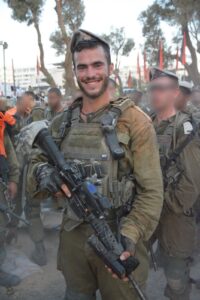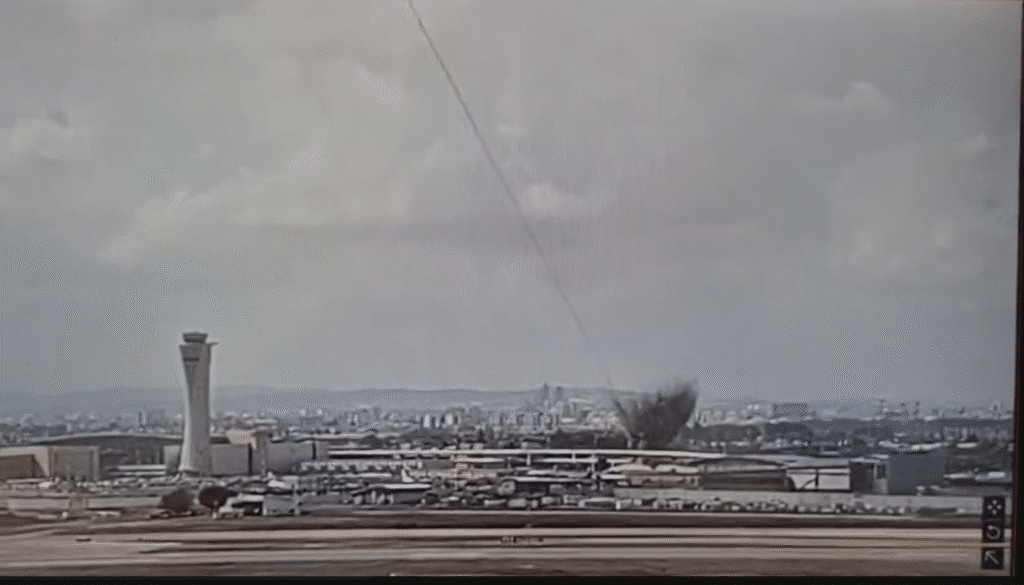
Overview
- On May 3rd, the Israeli military began issuing call-up notices to thousands of reservists in preparation for an expanded offensive in Gaza. The Israeli Security Cabinet approved plans for this expansion.
- The IDF announced plans to establish a humanitarian zone between the Morag Corridor and the Philadelphi Corridor once the area is cleared. A massive tent city will be erected there, and civilian companies will distribute food. Gazans from al-Mawasi and other areas of the strip will be allowed to enter following security checks at the Morag crossings, with the goal of reducing population density in other parts of Gaza and thereby disrupting Hamas’ maneuvering space.
- On the evening of Independence Day, April 30, Israel suffered from wild fires. There were five main fire zones, with several “secondary” fire points in between.
- On May 4, a missile fired by Yemen’s Houthi rebels landed near Ben Gurion Airport, Israel’s main international airport, causing a plume of smoke and widespread panic among passengers inside the terminal.
- Palestinian Authority (PA) intelligence chief Majed Faraj is expected to meet with CIA counterparts in Washington, marking the first high-level security meeting between the parties since Donald Trump returned to the White House.
- A series of sectarian clashes erupted starting April 28, following the release of an fake audio recording of a Druze sheikh cursing Muhammad. Although the sheikh later denied the recording and claimed it was fake news, events spiraled out of control. It is unclear who released the clip, but it served as justification for numerous Sunni factions to begin a campaign of slaughter against the Syrian Druze.

Gaza
Operational
- On May 3rd, the Israeli military began issuing call-up notices to thousands of reservists in preparation for an expanded offensive in Gaza. The Israeli Security Cabinet approved plans for this expansion.
- Over the weekend, the Israeli Air Force struck more than 100 terror targets across the Gaza Strip. Targets included terrorist cells, underground infrastructure, and military buildings from which militants were operating.
- In the northern Gaza Strip, IDF Division 252 continued its operations to locate and destroy both above-ground and underground infrastructure. During the operation, the forces discovered a weapons stockpile belonging to Hamas and eliminated several militants identified in the area.
- In the southern Gaza Strip, IDF Division 36 engaged in combat in the Rafah area and along the Morag Corridor. The forces located and destroyed weapons used by Hamas, and in coordination with the Air Force, destroyed terrorist infrastructure from both the air and ground, killing additional militants.
- Simultaneously, IDF’s Gaza Division (143) continued operations in the south, locating weaponry, destroying dozens of terrorist infrastructure, while eliminating several militants.
- The “Iron Fist” combat team is leading the assault in the Tel al-Sultan camp. So far, its fighters have located and destroyed dozens of Hamas terrorist infrastructure and weapons caches. During the operation, they discovered a weapons warehouse 80 meters from a building used as a school and 100 meters from a building used as a hospital. Inside the warehouse were UNRWA sacks filled with large quantities of ammunition.
Plan for Humanitarian Distribution
One of the leading obstacles in defeating Hamas was its control of humanitarian aid which gave it a huge lever over the civilian population in Gaza. Israel, with international allies, plans to change the humanitarian distribution mechanism which would remove this influence from Hamas.
The IDF announced plans to establish a humanitarian zone between the Morag Corridor and the Philadelphi Corridor once the area is cleared. A massive tent city will be erected there, and civilian companies will distribute food. Gazans from al-Mawasi and other areas of the strip will be allowed to enter following security checks at the Morag crossings, with the goal of reducing population density in other parts of Gaza and thereby disrupting Hamas’ maneuvering space. There is a possibility of maneuvering operations beginning for the first time in al-Mawasi or even Deir al-Balah.
According to the plan, wholesale distribution and centralized warehousing will be eliminated. Instead, international organizations and private security contractors will be responsible for directly distributing aid packages—boxes of food—to individual Gazan families. Each family will appoint a designated representative who will travel to an IDF-controlled security zone in southern Gaza, where aid will be distributed after it undergoes multiple rounds of inspection. Each food box will be sufficient for several days. Once depleted, the family representative will be permitted to return and collect another parcel.
This system is intended to disrupt Hamas’s control over aid—particularly food and water, which the organization uses as leverage over the population. Although the IDF will not be directly involved in aid distribution, Israel believes this method will make it significantly harder for Hamas to divert aid to its fighters.
This change comes as part of Israel’s broader strategy to pressure Hamas, which has included cutting off aid deliveries since March 2.
The U.S., Israel, and representatives of a new international foundation are close to reaching an agreement on how to resume the delivery of humanitarian aid to Palestinians in Gaza without Hamas control, according to two Israeli officials and one U.S. source.
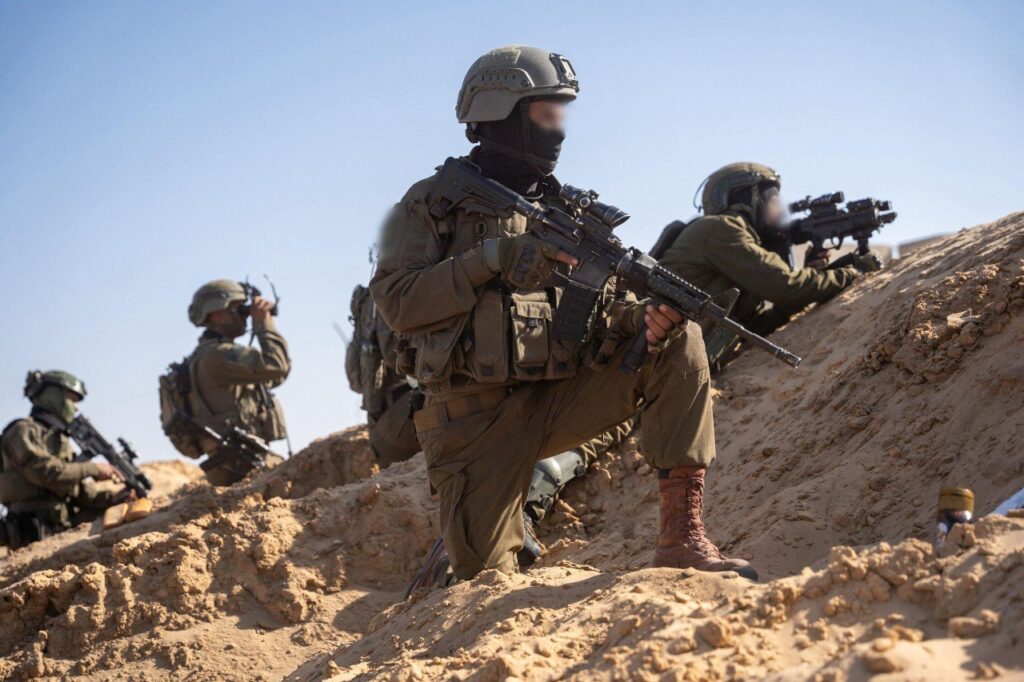
The proposed arrangement involves donor countries funding the foundation’s operations, including purchasing aid supplies. A private American company would oversee logistics and security around humanitarian aid compounds. The Israeli Defense Forces (IDF) would not be present in these compounds or take part in the aid delivery itself, but would secure the surrounding area. Israeli officials aim to have this mechanism in place before a further expansion of the IDF’s ground operations in Gaza, which are likely to proceed later this month if hostage and ceasefire talks remain stalled.
Diplomatic
- At the JNS Conference in Jerusalem, Prime Minister Netanyahu spoke about the two remaining theaters of war: Gaza and Iran. Regarding Gaza, he stated that the war will end only with the release of the hostages and the defeat of Hamas. He emphasized that Israel will maintain operational freedom in Gaza and that the Palestinian Authority will not govern the strip, saying, “We will not replace one terrorist entity with another.” Concerning Iran, he declared that Israel would destroy Iran’s nuclear reactors and would not accept any deal less strict than the Libyan model, which entails the full dismantling of Iran’s nuclear program.
- Israel publicly called on Qatar, a key mediator between Israel and Hamas, to “stop playing both sides” and to decide whether it stands with civilization or with Hamas, according to a statement from the Prime Minister’s Office.
- A ship carrying humanitarian aid and activists en route to Gaza was bombed by drones while sailing in international waters off Malta overnight between Thursday and Friday, according to the Freedom Flotilla Coalition, a pro-Palestinian activist group. Saudi Al Arabiya, citing a Western security source, reported that the convoy was organized by Hamas, and that those onboard intended to engage with IDF forces upon nearing the Gaza coast.

Domestic Israel
Fires in the Jerusalem Mountains
On the evening of Independence Day, April 30, Israel experienced an exceptionally hot and dry day, with temperatures averaging 36°C (96.8°F) between Tel Aviv and Jerusalem. Haze, humidity, heatwave, and hot winds affected the region. The forested areas west of Jerusalem, known for their dense groves and trees, have historically been prone to fires—whether by natural causes or deliberate arson by Arabs.
There were five main fire zones, with several “secondary” fire points in between. At least 120 firefighting teams and 10 firefighting aircraft were deployed but were unsuccessful in stopping the spread due to the scale of the fires.
By midnight, over 19,600 dunams (approx. 4,800 acres) had been completely burned, and 22 people were lightly injured from smoke inhalation. At least 14 settlements and areas, including a neighborhood in northern Beit Shemesh, were issued evacuation orders.
Due to the need to concentrate firefighting resources on the blazes, there were insufficient crews available to cover emergency events during the Independence Day celebrations, leading to their cancellation.
Pro Hamas Incitement
Three arson suspects from East Jerusalem were arrested, and 18 social media posts inciting arson were uncovered, including quotes like: “Oh God, increase and bless the fire. May God avenge our people in Gaza.”
Hezbollah-affiliated channels mocked and celebrated the fires and Hamas-affiliated channels incited for more arson: “May the settlers’ homes turn to ash beneath the feet of the revolutionary fighters,” accompanied by the hashtag: #Burn_the_settlers’_homes
These pro-Hamas channels escalated their incitement, calling the fires “The Flame of Freedom”. Unlike earlier posts calling for shooting, stabbing, car-ramming attacks, or arson, this one included a direct call for the kidnapping of Israelis, taking advantage of the national emergency and the distraction of security and fire forces by the massive fires.
It is still unclear what caused these major fires—whether it was the extreme heat, arson, carelessness by hikers, or a combination. However, it is considered one of the most severe wildfire events in Israel’s history.
Yemen
- According to Arab media, there were 36 American airstrikes targeting Houthi sites in Yemen.
- On May 4, a missile fired by Yemen’s Houthi rebels landed near Ben Gurion Airport, Israel’s main international airport, causing a plume of smoke and widespread panic among passengers inside the terminal.
- Shortly afterward, the Houthi military spokesperson declared: “We succeeded in striking Ben Gurion Airport with a hypersonic ballistic missile. American and Israeli defense systems failed. Air traffic was halted for one hour. We warn airline companies: Ben Gurion Airport is not safe.”

Judea and Samaria
- Palestinian Authority (PA) intelligence chief Majed Faraj is expected to meet with CIA counterparts in Washington, marking the first high-level security meeting between the parties since Donald Trump returned to the White House.
- Hussein al-Sheikh, recently appointed deputy to PA President Mahmoud Abbas, is preparing for his first diplomatic visit—a trip to Saudi Arabia next week. Al-Sheikh’s choice to prioritize Riyadh reflects a strategic understanding of the key influence Saudi Arabia holds in helping the PA reestablish its international relevance.
- A Trump administration official revealed that the U.S. State Department is planning to shut down the office of the U.S. Security Coordinator (USSC) in Jerusalem, which plays a key role in facilitating security cooperation between Israel and the Palestinian Authority. This move is part of a larger restructuring plan being led by Secretary of State Marco Rubio.
Lebanon
Diplomatic
The Lebanese Supreme Defence Council issued a warning to Hamas not to conduct operations from Lebanese territory that could threaten Lebanon’s sovereignty or national security.
Mohammad al-Mustafa, Secretary-General of the Supreme Defence Council, said the council would recommend several decisions to the Lebanese cabinet, including a direct warning to Hamas to avoid using Lebanon as a staging ground for activities that might jeopardize national stability.
Syria
Military Activity
A series of sectarian clashes erupted starting April 28, following the release of an audio recording of a Druze sheikh cursing Muhammad. Although the sheikh later denied the recording and claimed it was fake news, events spiraled out of control. It is unclear who released the clip, but it served as justification for numerous Sunni factions to begin a campaign of slaughter.
These clashes intensified across Syria. Islamists took to the streets to “defend the prophet’s name,” with chants calling for jihad, alongside anti-Jewish incitement such as: “Khaybar, Khaybar ya Yahud” and displaying Shahada flags and ISIS flags. On April 29, jihadists in Hama also chanted: “Khaybar, Khaybar ya Yahud” and “Khaybar, Khaybar ya Druze,” calling Druze “pigs.”
This also presented an opportunity for al-Julani to target factions that refused his authority and Syrian unity. Specifically, the Druze sheikh Hikmat al-Hijri and his militia, the “Military Council of Suwayda” which were targeted in order to expand al-Julani’s control over Syria.
From April 28 to 30, heavy gunfire exchanges occurred in two southern Damascus neighborhoods—Jaramana and Sahnaya—both of which have mixed Druze-Christian populations. Fighting took place between armed Druze residents, reinforcements from other Druze areas, and Sunni militants, both those allegedly unaffiliated with the regime and those directly tied to it. By Thursday, May 1, at least 73 people were reported killed, with other estimates exceeding 100 deaths.
The Lebanese Al-Mayadeen (a Hezbollah network) channel reported that there were at least five drone strikes by Israeli UAVs targeting Sunni militants, killing at least one, with additional reports of Israeli aircraft circling but not attacking. Five wounded Syrian Druze were evacuated to Israel for medical treatment.
Following a gathering of Druze dignitaries in Suwayda, a decision was made by that faction to allow al-Julani’s security forces into the province, including its capital city, and to secure the Suwayda–Damascus Road. They are reportedly willing to recruit 2,000 Druze to his army. However, the senior Druze sheikh was absent, and the decision is not yet unanimously accepted, pending developments in the coming days. This marks the first time such a move has occurred since the fall of Bashar al-Assad and the rise to power of HTS.
Druze representatives in the Jaramana area, a suburb of Damascus, reached an agreement with Syrian regime officials to hand over heavy weapons in their possession and to reinforce regime security forces in the area.
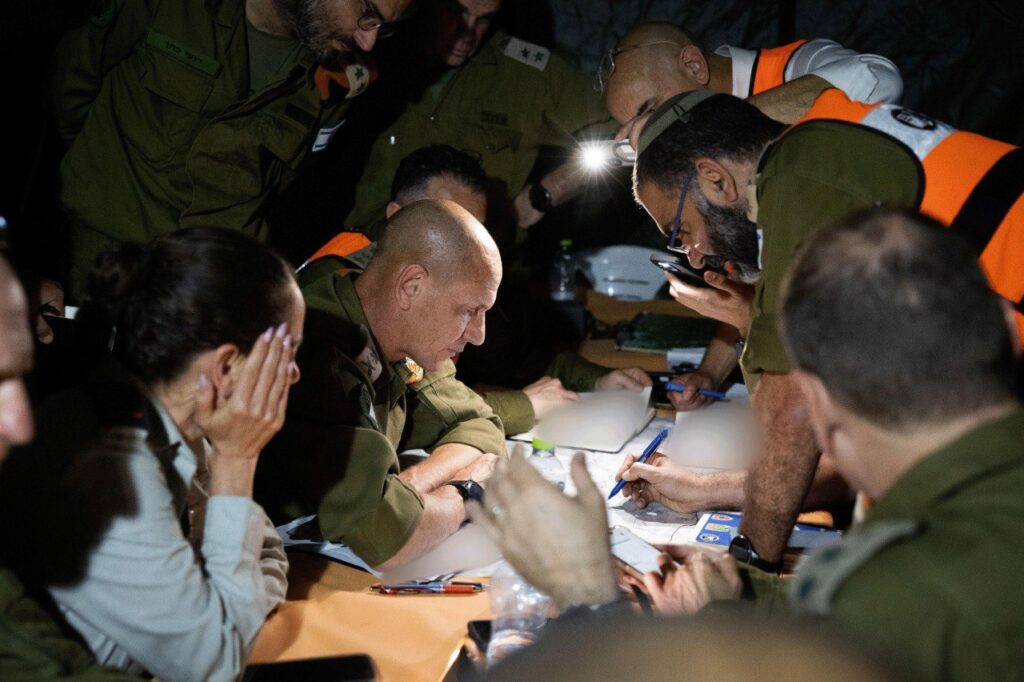
Israel’s Response
In Israel, the Druze community mobilized its leadership to meet with Education Minister Yoav Kisch and other senior officials to press the government to assist and arm the Syrian Druze. Reports described a Druze protest in Israel outside the Prime Minister’s residence, demanding protection for Druze in Syria. Hundreds of Druze-Israelis demonstrated, blocking intersections and roads in protest over Israel’s inaction.
Netanyahu had previously stated that not only would harm to the Druze community in southern Syria not be tolerated, but also that al-Julani’s army must not move south to Damascus, and that the three provinces of Quneitra, Daraa, and Suwayda must be completely demilitarized. All of this is now being put to the test.
In response to escalating violence against the Druze minority in Syria, Israel conducted airstrikes using 12 fighter jets targeting multiple components of weapons infrastructure across Syria, including anti-aircraft guns and surface-to-air missile launchers on May 2nd near the official residence compound of Syrian leader Al-Julani in Damascus, according to a statement by the Israel Defense Forces.
Prime Minister Benjamin Netanyahu spoke with Sheikh Muafak Tarif, the spiritual leader of the Druze community in Israel. Tarif expressed gratitude for Netanyahu’s orders to protect Syrian Druze this week. According to the Prime Minister’s Office, Tarif said Israel’s actions “sent a deterrent message to the Syrian regime” and reaffirmed Israel’s commitment to the Druze community in Syria.
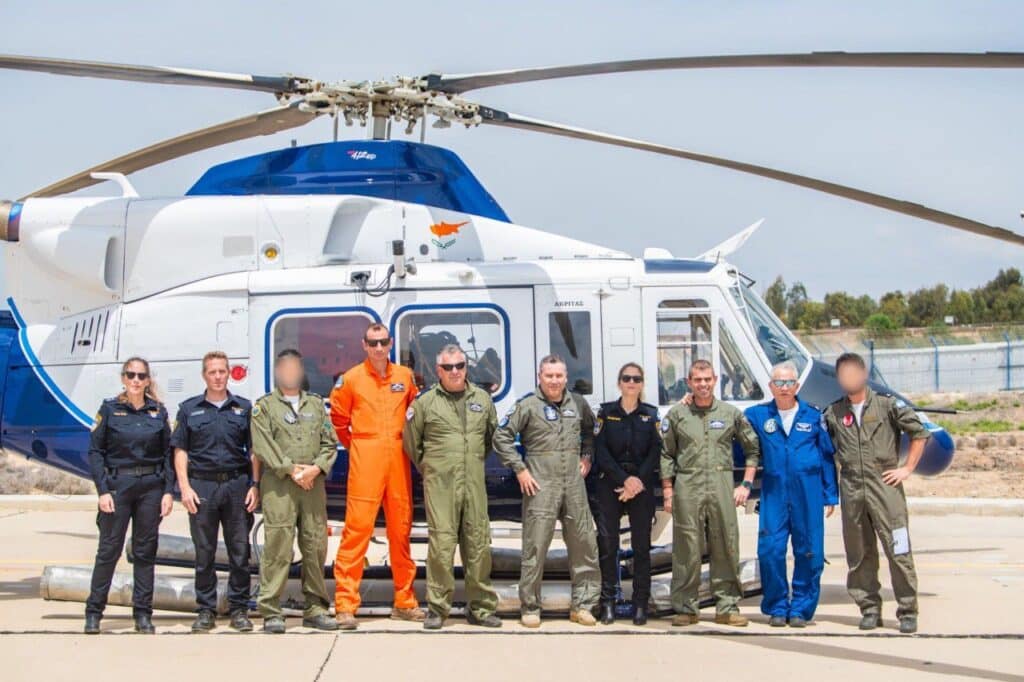
Diplomacy
- Syrian Interior Minister Anas Khatib met in Damascus with a joint German-Austrian delegation led by German Interior Minister Nancy Faeser and Austrian Interior Minister Gerhard Karner. They discussed enhancing security cooperation between the three nations.
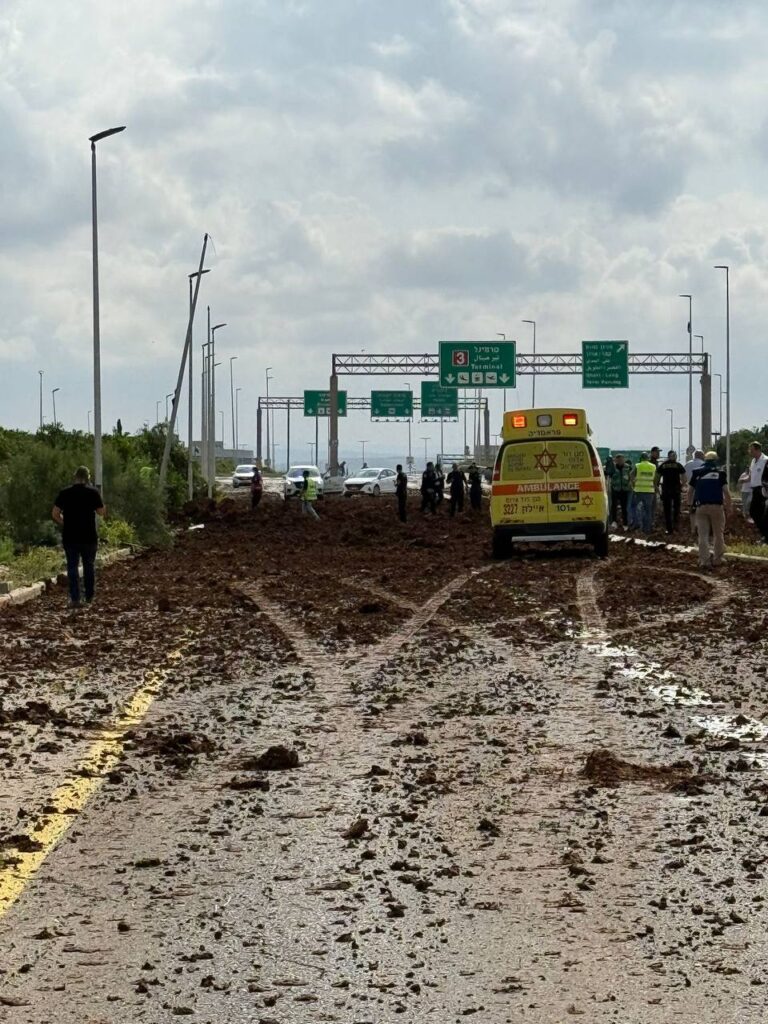
Iran
- Iranian President Masoud Pezeshkian visited neighboring Azerbaijan and met with President Ilham Aliyev. During the visit, Pezeshkian confirmed that the Nagorno-Karabakh region is fully part of the Republic of Azerbaijan, and emphasized Iran’s support for Azerbaijan’s territorial integrity. The two presidents signed seven memoranda of understanding between Iran and Azerbaijan, covering areas such as politics, transportation, culture, healthcare cooperation, media, and investment.
Nuclear Deal
Negotiations are underway regarding Iran’s nuclear program. Under the proposed terms, Iran would agree to:
- Cap uranium enrichment at 3.67%, in line with the JCPOA
- Limit the size of its enriched uranium stockpile
- Use fewer advanced centrifuges
- Dilute, export, or seal uranium enriched to 60%
- Accept unprecedented oversight by the International Atomic Energy Agency (IAEA)
In return, Iran would receive significant sanctions relief, according to multiple sources.
However, Prime Minister Netanyahu is demanding a deal with “zero enrichment”, similar to the Libya model, which would require the full dismantling of Iran’s nuclear infrastructure.
While Iran insists its right to enrich uranium is non-negotiable, its officials say discussions are open regarding the amount of stockpiled material, the number of centrifuges, and possible export arrangements.
The United States is also pressing for the inclusion of Iran’s ballistic missile program in the talks, but Tehran continues to reject any discussion of that issue.
Ahead of the upcoming negotiation round, the U.S. imposed sanctions on entities accused of illicit trading of Iranian petroleum and petrochemicals.
Fallen Soldiers
- Captain Noam Ravid z”l
- Staff sergeant Yaly seror z”l
- Sergeant Niv Dayag z”l

